27th NOV 1940 - 20th JUL 1973 BRUCE LEE
Bruce Lee
From Wikipedia, the free encyclopedia
For other uses, see Bruce Lee (disambiguation).
| Bruce Lee | |
|---|---|

Lee in 1967
| |
| Chinese name | 李小龍 (traditional) |
| Chinese name | 李小龙 (simplified) |
| Pinyin | Lǐ Xiǎolóng (Mandarin) |
| Jyutping | Lei5 Siu2 Lung4 (Cantonese) |
| Birth name | Lee Jun-fan 李振藩 (Traditional) 李振藩 (Simplified) Lǐ Zhènfān (Mandarin) Lei5 Zan3 Faan4 (Cantonese) |
| Ancestry | Shunde, Guangdong, China |
| Origin | Hong Kong |
| Born | November 27, 1940 Chinatown, San Francisco,California, U.S. |
| Died | July 20, 1973 (aged 32) Kowloon Tong, Hong Kong[1] |
| Resting place | Lakeview Cemetery |
| Occupation | Martial artist, martial arts instructor, actor, film director, screenwriter, producer |
| Years active | 1941–73 |
| Spouse(s) | Linda Emery (1964–73) |
| Children | Brandon Lee (1965–93) Shannon Lee (born 1969) |
| Parents | Lee Hoi-chuen (1901–65) Grace Ho (1907–96) |
| Alma mater | University of Washington, Seattle |
| Official website | Bruce Lee Foundation Bruce Lee official website |
Bruce Lee (Chinese: 李小龍; born Lee Jun-fan, Chinese: 李振藩; November 27, 1940 – July 20, 1973) was a Hong Kong American martial artist, Hong Kong action film actor, martial arts instructor, philosopher, filmmaker,[3] and the founder of Jeet Kune Do. Lee was the son of Cantonese opera star Lee Hoi-Chuen. He is widely considered by commentators, critics, media and other martial artists to be one of the most influential martial artists of all time,[4] and a pop culture icon of the 20th century.[5][6] He is often credited with helping to change the way Asians were presented in American films.[7]
Lee was born in Chinatown, San Francisco on November 27, 1940 to parents from Hong Kong and was raised in Kowloon with his family until his late teens. He was introduced to the film industry by his father and appeared in several films as a child actor. Lee moved to the United States at the age of 18 to receive his higher education, at the University of Washington, at Seattle[8] and it was during this time that he began teaching martial arts. His Hong Kong and Hollywood-produced films elevated the traditional Hong Kong martial arts film to a new level of popularity and acclaim, sparking a surge of interest in Chinese martial arts in the West in the 1970s. The direction and tone of his films changed and influenced martial arts and martial arts films in the United States, Hong Kong and the rest of the world.[9]
He is noted for his roles in five feature-length films: Lo Wei's The Big Boss (1971) and Fist of Fury (1972); Golden Harvest's Way of the Dragon (1972), directed and written by Lee; Golden Harvest and Warner Brothers'Enter the Dragon (1973) and The Game of Death (1978), both directed by Robert Clouse.[10] Lee became an iconic figure known throughout the world, particularly among the Chinese, as he portrayed Chinese nationalism in his films.[11] He trained in the art of Wing Chun and later combined his other influences from various sources, in the spirit of his personal martial arts philosophy, which he dubbed Jeet Kune Do (The Way of the Intercepting Fist). Lee held dual nationality of Hong Kong and the United States.[12] He died in Kowloon Tong on July 20, 1973 at the age of 32.
Contents
[hide]Early life
| Part of a series on |
| Chinese martial arts (Wushu) |
|---|
 |
| List of Chinese martial arts |
| Wushu in the world |
| Wushu athletes/practitioners |
| Wushu influence |
Bruce Lee was born on November 27, 1940, at the Chinese Hospital, in San Francisco's Chinatown. According to the Chinese zodiac, Lee was born in both the hour and the year of the Dragon, which according to tradition is a strong and fortuitous omen.[13]
Bruce's father, Lee Hoi-chuen, (李海泉) was Han Chinese, and his mother, Grace Ho (何愛瑜), was half-Chinese and half-Caucasian.[14] Specifically, Grace Ho was purportedly a half-German Catholic.[15] Grace Ho was the daughter of Ho Kom-tong (Ho Gumtong, 何甘棠) and the niece of Sir Robert Ho-tung, both notable Hong Kong businessmen and philanthropists.[16] Bruce was the fourth child of five children: Phoebe Lee (李秋源), Agnes Lee (李秋鳳), Peter Lee (李忠琛), and Robert Lee (李振輝). Lee and his parents returned to Hong Kong when he was three months old.[17]
Names
Lee's Cantonese birth name was Lee Jun-fan (李振藩).[18] The name homophonically means "return again", and was given to Lee by his mother, who felt he would return to the United States once he came of age.[15] Because of his mother's superstitious nature, she had originally named him Sai-fon (細鳳), which is a feminine name meaning "small phoenix".[19] The English name "Bruce" is thought to have been given by the hospital attending physician, Dr. Mary Glover.[20]
Lee had three other Chinese names: Li Yuanxin (李源鑫), a family/clan name; Li Yuanjian (李元鑒), which he used as a student name while he was attending La Salle College, and his Chinese screen name Li Xiaolong (李小龍; Xiaolong means "little dragon"). Lee's given name Jun-fan was originally written in Chinese as 震藩, however, the Jun (震)Chinese character was identical to part of his grandfather's name, Lee Jun-biu (李震彪). Hence, the Chinese character for Jun in Lee's name was changed to the homonym 振 instead, to avoid naming taboo in Chinese tradition.
Family
Lee's father, Lee Hoi-chuen, was one of the leading Cantonese opera and film actors at the time, and was embarking on a year-long opera tour with his family on the eve of the Japanese invasion of Hong Kong. Lee Hoi-chuen had been touring the United States for many years and performing at numerous Chinese communities there.
Although many of his peers decided to stay in the United States, Lee Hoi-chuen returned to Hong Kong after Bruce's birth. Within months, Hong Kong was invaded and the Lees lived for three years and eight months under Japanese occupation. After the war ended, Lee Hoi-chuen resumed his acting career and became a more popular actor during Hong Kong's rebuilding years.
Lee's mother, Grace Ho, was from one of the wealthiest and most powerful clans in Hong Kong, the Ho-tungs. She was the niece of Sir Robert Ho-tung,[16][21] the Eurasian patriarch of the clan. As such, the young Bruce Lee grew up in an affluent and privileged environment. Despite the advantage of his family's status, the neighborhood in which Lee grew up became overcrowded, dangerous, and full of gang rivalries due to an influx of refugees fleeing communist China for Hong Kong, at that time a British Crown colony.[19]
After Lee was involved in several street fights, his parents decided that he needed to be trained in the martial arts. Lee's first introduction to martial arts was through his father, from whom he learned the fundamentals ofWu-style t'ai chi ch'uan.[22]
Wing Chun
See also: History of Wing Chun
The largest influence on Lee's martial arts development was his study of Wing Chun. Lee began training in Wing Chun when he was 16 years old under the Wing Chun teacher Yip Man in 1957, after losing several fights with rival gang members. Yip's regular classes generally consisted of the forms practice, chi sao (sticking hands) drills, wooden dummy techniques, and free-sparring.[23] There was no set pattern to the classes.[23] Yip tried to keep his students from fighting in the street gangs of Hong Kong by encouraging them to fight in organized competitions.[24]
After a year into his Wing Chun training, most of Yip Man's other students refused to train with Lee after they learned of his mixed ancestry, as the Chinese were generally against teaching their martial arts techniques to non-Asians.[25][26] Lee's sparring partner, Hawkins Cheung states, "Probably fewer than six people in the whole Wing Chun clan were personally taught, or even partly taught, by Yip Man".[27] However, Lee showed a keen interest in Wing Chun, and continued to train privately with Yip Man and Wong Shun Leung in 1955.[28] Wan Kam Leung, a student of Wong's, witnessed a sparring bout between Wong and Lee, and noted the speed and precision with which Lee was able to deliver his kicks. Lee continued to train with Wong Shun Leung after later returning to Hong Kong from America.
Leaving Hong Kong
After attending Tak Sun School (德信學校) (several blocks from his home at 218 Nathan Road, Kowloon), Lee entered the primary school division of La Salle College at the age of 12. In around 1956, due to poor academic performance (or possibly poor conduct as well), he was transferred to St. Francis Xavier's College (high school) where he would be mentored by Brother Edward, a teacher and coach of the school boxing team.
In the spring of 1959, Lee got into yet another street fight and the police were called.[29] Until his late teens, Lee's street fights became more frequent and included beating the son of a feared triad family.[citation needed] Eventually, Lee's father decided his son should leave Hong Kong to pursue a safer and healthier life in the United States. His parents confirmed the police's fear that this time Lee's opponent had an organised crime background, and there was the possibility that a contract was out for his life.
In April 1959, Lee's parents decided to send him to the United States to stay with his older sister, Agnes Lee (李秋鳳), who was already living with family friends in San Francisco.
New life in America
At the age of 18, Lee returned to the United States with $100 in his pocket. After living in San Francisco for several months, he moved to Seattle in 1959, to continue his high school education, where he also worked for Ruby Chow as a live-in waiter at her restaurant.
Chow's husband was a co-worker and friend of Lee's father. Lee's elder brother Peter Lee (李忠琛) would also join him in Seattle for a short stay before moving on to Minnesota to attend college. In December 1960, Lee completed his high school education and received his diploma from Edison Technical School (now Seattle Central Community College, located on Capitol Hill in Seattle).
In March 1961, Lee enrolled at the University of Washington, majoring in drama according to a 1999 article in the university's alumni magazine,[30] not in philosophy as stated by Lee himself and many others. Lee also studied philosophy, psychology, and various other subjects.[31][32] It was at the University of Washington that he met his future wife Linda Emery, a fellow student studying to become a teacher, whom he married in August 1964.
Lee had two children with Linda Emery, Brandon Lee (1965–93) and Shannon Lee (born 1969).
Martial arts career
Jun Fan Gung Fu
Lee began teaching martial arts in the United States in 1959. He called what he taught Jun Fan Gung Fu (literally Bruce Lee's Kung Fu). It was basically his approach to Wing Chun.[33] Lee taught friends he met in Seattle, starting withJudo practitioner Jesse Glover, who continued to teach some of Lee's early techniques. Taky Kimura became Lee's first Assistant Instructor and continued to teach his art and philosophy after Lee's death.[34] Lee opened his firstmartial arts school, named the Lee Jun Fan Gung Fu Institute, in Seattle.
Lee dropped out of college in the spring of 1964 and moved to Oakland to live with James Yimm Lee (嚴鏡海). James Lee was twenty years senior to Bruce Lee and a well known Chinese martial artist in the area. Together, they founded the second Jun Fan martial art studio in Oakland. James Lee was also responsible for introducing Bruce Lee to Ed Parker, American martial artist, and organizer of the Long Beach International Karate Championships at which Bruce Lee was later "discovered" by Hollywood.
Long Beach International Karate Championships
At the invitation of Ed Parker, Lee appeared in the 1964 Long Beach International Karate Championships[35] and performed repetitions of two-finger push-ups (using the thumb and the index finger of one hand) with feet at approximately a shoulder-width apart. In the same Long Beach event he also performed the "One inch punch."[36] Lee stood upright, his right foot forward with knees bent slightly, in front of a standing, stationary partner. Lee's right arm was partly extended and his right fist approximately one inch (2.5 cm) away from the partner's chest. Without retracting his right arm, Lee then forcibly delivered the punch to his partner while largely maintaining his posture, sending the partner backwards and falling into a chair said to be placed behind the partner to prevent injury, though his partner's momentum soon caused him to fall to the floor. His volunteer was Bob Baker of Stockton, California. "I told Bruce not to do this type of demonstration again", Baker recalled. "When he punched me that last time, I had to stay home from work because the pain in my chest was unbearable".[37]
It was at the 1964 championships where Lee first met Taekwondo master Jhoon Goo Rhee. The two developed a friendship – a relationship from which they benefited as martial artists. Rhee taught Lee the side kick in detail, and Lee taught Rhee the "non-telegraphic" punch.[38]
Lee appeared at the 1967 Long Beach International Karate Championships and performed various demonstrations, including the famous "unstoppable punch" against USKA world Karate champion Vic Moore.[35] Lee allegedly told Moore that he was going to throw a straight punch to the face, and all he had to do was to try to block it. Lee took several steps back and asked if Moore was ready. When Moore nodded in affirmation, Lee glided towards him until he was within striking range. He then threw a straight punch directly at Moore's face, and stopped before impact. In eight attempts, Moore failed to block any of the punches.[39][40] However, Moore and grandmaster Steve Mohammed claim that Lee had first told Moore that he was going to throw a straight punch to the body, which Moore blocked. Lee attempted another punch, and Moore blocked it as well. The third punch, which Lee threw to Moore's face, did not come nearly within striking distance. Moore, as well as many in the room that day, says Lee never successfully struck Moore but Moore was able to strike Lee after trying on his own. Moore claims that Bruce Lee said he was the fastest American he's ever seen and that Lee's media crew repeatedly played the one punch towards Moore's face that did not come within striking range, allegedly in an attempt to preserve Lee's superstar image.[41]
Fight with Wong Jack Man
In Oakland, California in 1964 at Chinatown, Lee had a controversial private match with Wong Jack Man, a direct student of Ma Kin Fung known for his mastery of Xingyiquan, Northern Shaolin, and T'ai chi ch'uan. According to Lee, the Chinese community issued an ultimatum to him to stop teaching non-Chinese. When he refused to comply, he was challenged to a combat match with Wong. The arrangement was that if Lee lost, he would have to shut down his school; while if he won, then Lee would be free to teachCaucasians or anyone else.[42] Wong denied this, stating that he requested to fight Lee after Lee boasted during one of his demonstrations at a Chinatown theatre that he could beat anyone in San Francisco, and that Wong himself did not discriminate against Caucasians or other non-Chinese.[43] Lee commented, "That paper had all the names of the sifu from Chinatown, but they don't scare me".[44]
Individuals known to have witnessed the match include Cadwell, James Lee (Bruce Lee's associate, no relation), and William Chen, a teacher of T'ai chi ch'uan. Wong and William Chen stated that the fight lasted an unusually long 20–25 minutes.[43] Wong claims that he had originally expected a serious but polite bout; however Lee had attacked him very aggressively with intent to kill, straight from the beginning of the bout when he had replied to Wong's traditional handshake offer by "pretending to extend a friendly hand only to suddenly transform the hand into a four-pronged spear aimed at Wong's eyes". Forced to defend his life, he had nonetheless refrained from striking Lee with killing force when the opportunity presented itself because it could earn him a prison sentence. The fight ended due to Lee's "unusually winded" condition, as opposed to a decisive blow by either fighter.[43] According to Bruce Lee, Linda Lee Cadwell, and James Yimm Lee however, the fight lasted a mere 3 minutes with a decisive victory for Lee. In Cadwell's account, "The fight ensued, it was a no-holds-barred fight, it took three minutes. Bruce got this guy down to the ground and said 'do you give up?' and the man said he gave up".[42]
A couple of weeks after the bout, Lee gave an interview claiming that he had defeated an unnamed challenger, which Wong says was an obvious reference to him.[43] In response, Wong published his own account of the fight in the Chinese Pacific Weekly, aChinese-language newspaper in San Francisco, with an invitation to a public rematch if Lee was not satisfied with the account. Lee did not respond to the invitation "despite his reputation for responding with fists of fury to the slightest provocation",[43] and there were no further public announcements by either, though Lee continued to teach Caucasians.
Jeet Kune Do
Main article: Jeet Kune Do
Jeet Kune Do originated in 1967. After filming one season of The Green Hornet, Lee found himself out of work and opened The Jun Fan Institute of Gung Fu. The controversial match with Wong Jack Man influenced Lee's philosophy about martial arts. Lee concluded that the fight had lasted too long and that he had failed to live up to his potential using his Wing Chun techniques. He took the view that traditional martial arts techniques were too rigid and formalistic to be practical in scenarios of chaotic street fighting. Lee decided to develop a system with an emphasis on "practicality, flexibility, speed, and efficiency". He started to use different methods of training such as weight training for strength, running for endurance, stretching for flexibility, and many others which he constantly adapted, including fencing and basic boxing techniques.
Lee emphasised what he called "the style of no style". This consisted of getting rid of the formalised approach which Lee claimed was indicative of traditional styles. Lee felt the system he now called Jun Fan Gung Fu was even too restrictive, and eventually evolved into a philosophy and martial art he would come to call Jeet Kune Do or the Way of the Intercepting Fist. It is a term he would later regret, because Jeet Kune Do implied specific parameters that styles connote; whereas the idea of his martial art was to exist outside of parameters and limitations.[46]
Fitness and nutrition
At 173 cm (5 ft 8 in) and 64 kg (141 lb),[47] Lee was renowned for his physical fitness and vigor, achieved by using a dedicated fitness regimen to become as strong as possible. After his match with Wong Jack Man in 1965, Lee changed his approach toward martial arts training. Lee felt that many martial artists of his time did not spend enough time on physical conditioning. Lee included all elements of total fitness—muscular strength, muscular endurance, cardiovascular endurance, and flexibility. He used traditional bodybuilding techniques to build some muscle mass, not overdone that could decrease speed or flexibility. At the same time in balance, Lee was careful to admonish that mental and spiritual preparation are fundamental to the success of physical training in martial arts skills. In Tao of Jeet Kune Do he wrote,
According to Linda Lee Cadwell, soon after he moved to the United States, Lee started to take nutrition seriously and developed an interest in health foods, high-protein drinks and vitamin and mineral supplements. He later concluded that in order to achieve a high-performance body, one could not fuel it with a diet of junk food, and with "the wrong fuel" one's body would perform sluggishly or sloppily.[49] Lee also avoided baked goods and refined flour, describing them as providing calories which did nothing for his body.[50]
Acting career
Main article: Bruce Lee filmography
Lee's father Lee Hoi-chuen was a famous Cantonese opera star. Because of this, Lee was introduced into films at a very young age and appeared in several films as a child. Lee had his first role as a baby who was carried onto the stage in the film Golden Gate Girl. By the time he was 18, he had appeared in twenty films.[13]
While in the United States from 1959 to 1964, Lee abandoned thoughts of a film career in favour of pursuing martial arts. However, a martial arts exhibition on Long Beach in 1964 eventually led to the invitation by William Dozier for an audition for a part in the pilot for "Number One Son". The show never aired, but Lee was invited for the role of Kato alongside Van Williams in the TV series The Green Hornet. The show lasted just one season, from 1966 to 1967. Lee also played Kato in three crossover episodes of Batman. This was followed by guest appearances in three television series: Ironside (1967), Here Come the Brides (1969), and Blondie(1969).
At the time, two of Lee's martial arts students were Hollywood script writer Stirling Silliphant and actor James Coburn. In 1969 the three worked on a script for a film called The Silent Flute, and went together on a location hunt to India. The project was not realised at the time; but the 1978 film Circle of Iron, starring David Carradine, was based on the same plot. In 2010, producer Paul Maslansky was reported to plan and receive fundings for a film based on the original script for The Silent Flute.[51] In 1969, Lee made a brief appearance in the Silliphant-penned film Marlowe where he played a henchman hired to intimidate private detective Philip Marlowe, (played by James Garner), by smashing up his office with leaping kicks and flashing punches, only to later accidentally jump off a tall building while trying to kick Marlowe off. The same year he also choreographed fight scenes for The Wrecking Crew starring Dean Martin, Sharon Tate, and featuring Chuck Norris in his first role. In 1970, he was responsible for fight choreography for A Walk in the Spring Rain starring Ingrid Bergman andAnthony Quinn, again written by Silliphant. In 1971, Lee appeared in four episodes of the television series Longstreet, written by Silliphant. Lee played the martial arts instructor of the title character Mike Longstreet (played by James Franciscus), and important aspects of his martial arts philosophy were written into the script.
According to statements made by Lee, and also by Linda Lee Cadwell after Lee's death, in 1971 Lee pitched a television series of his own tentatively titled The Warrior, discussions which were also confirmed by Warner Bros.In a December 9, 1971 television interview on The Pierre Berton Show, Lee stated that both Paramount and Warner Brothers wanted him "to be in a modernized type of a thing, and that they think the Western idea is out, whereas I want to do the Western".[52] According to Cadwell, however, Lee's concept was retooled and renamed Kung Fu, but Warner Bros. gave Lee no credit.[53] Warner Brothers states that they had for some time been developing an identical concept,[54] created by two writers and producers, Ed Spielman and Howard Friedlander. According to these sources, the reason Lee was not cast was in part because of his ethnicity, but more so because he had a thick accent.[55] The role of the Shaolin monk in the Wild West, was eventually awarded to then-non-martial-artist David Carradine. In The Pierre Berton Show interview, Lee stated he understood Warner Brothers' attitudes towards casting in the series: "They think that business wise it is a risk. I don't blame them. If the situation were reversed, and an American star were to come to Hong Kong, and I was the man with the money, I would have my own concerns as to whether the acceptance would be there".[56]
Producer Fred Weintraub had advised Lee to return to Hong Kong and make a feature film which he could showcase to executives in Hollywood.[57] Not happy with his supporting roles in the United States, Lee returned to Hong Kong. Unaware that The Green Hornet had been played to success in Hong Kong and was unofficially referred to as "The Kato Show", he was surprised to be recognised on the street as the star of the show. After negotiating with both Shaw Brothers Studio and Golden Harvest, Lee signed a film contract to star in two films produced by Golden Harvest. Lee played his first leading role in The Big Boss (1971) which proved to be an enormous box office success across Asia and catapulted him to stardom. He soon followed up with Fist of Fury (1972) which broke the box office records set previously by The Big Boss. Having finished his initial two-year contract, Lee negotiated a new deal with Golden Harvest. Lee later formed his own company, Concord Production Inc. (協和電影公司), with Chow. For his third film, Way of the Dragon (1972), he was given complete control of the film's production as the writer, director, star, and choreographer of the fight scenes.
In 1964, at a demonstration in Long Beach, California, Lee had met Karate champion Chuck Norris. In Way of the Dragon Lee introduced Norris to movie-goers as his opponent in the final death fight at the Colosseum in Rome, today considered one of Lee's most legendary fight scenes and one of the most memorable fight scenes in martial arts film history.[58] The role was originally offered to American Karate champion Joe Lewis.[59]
In late 1972, Lee began work on his fourth Golden Harvest Film, Game of Death. He began filming some scenes including his fight sequence with 7 ft 2 in (218 cm) American Basketball star Kareem Abdul-Jabbar, a former student. Production was stopped when Warner Brothers offered Lee the opportunity to star in Enter the Dragon, the first film to be produced jointly by Golden Harvest and Warner Bros. Filming commenced in Hong Kong in February 1973. One month into the filming, another production company, Starseas Motion Pictures, promoted Bruce Lee as a leading actor in Fist of Unicorn, although he had merely agreed to choreograph the fight sequences in the film as a favour to his long-time friend Unicorn Chan. Lee planned to sue the production company, but retained his friendship with Chan.[60] However, only a few months after the completion of Enter the Dragon, and six days before its July 26, 1973 release,[61] Lee died. Enter the Dragon would go on to become one of the year's highest grossing films and cement Lee as a martial arts legend. It was made for US$850,000 in 1973 (equivalent to $4 million adjusted for inflation as of 2007).[62] To date, Enter the Dragon has grossed over $200 million worldwide.[63] The film sparked a brief fad in martial arts, epitomised in songs such as "Kung Fu Fighting" and TV shows like Kung Fu.
Robert Clouse, the director of Enter the Dragon and Golden Harvest revived Lee's unfinished film Game of Death. Lee had shot over 100 minutes of footage, including out-takes, for Game of Death before shooting was stopped to allow him to work on Enter the Dragon. In addition to Abdul-Jabbar, George Lazenby, Hapkido master Ji Han-Jae and another of Lee's students, Dan Inosanto, were also to appear in the film, which was to culminate in Lee's character, Hai Tien (clad in the now-famous yellow track suit) taking on a series of different challengers on each floor as they make their way through a five-level pagoda. In a controversial move, Robert Clouse finished the film using a look-alike and archive footage of Lee from his other films with a new storyline and cast, which was released in 1978. However, the cobbled-together film contained only fifteen minutes of actual footage of Lee (he had printed many unsuccessful takes)[64] while the rest had a Lee look-alike, Kim Tai Chung, and Yuen Biao as stunt double. The unused footage Lee had filmed was recovered 22 years later and included in the documentary Bruce Lee: A Warrior's Journey.[65]
Apart from Game of Death, other future film projects were planned to feature Lee at the time. In 1972, after the success of The Big Boss and Fist of Fury, a third film was planned by Raymond Chow at Golden Harvest to be directed by Lo Wei, titled Yellow-Faced Tiger. However, at the time, Lee decided to direct and produce his own script for Way of the Dragon instead. Although Lee had formed a production company with Raymond Chow, a period film was also planned from September–November 1973 with the competing Shaw Brothers Studio, to be directed by either Chor Yuen or Cheng Kang, and written by Yi Kang and Chang Cheh, titled The Seven Sons of the Jade Dragon.[66] Lee had also worked on several scripts himself. A tape containing a recording of Lee narrating the basic storyline to a film tentatively titled Southern Fist/Northern Leg exists, showing some similarities with the canned script for The Silent Flute (Circle of Iron).[67] Another script had the title Green Bamboo Warrior, set in San Francisco, planned to co-star Bolo Yeung and to be produced by Andrew Vajna who later went on to produce First Blood.[60] Photo shoot costume tests were also organized for some of these planned film projects.
Artistry
Philosophy
Lee is best known as a martial artist, but he also studied drama and philosophy while a student at the University of Washington. He was well-read and had an extensive library. His own books on martial arts and fighting philosophy are known for their philosophical assertions, both inside and outside of martial arts circles. His eclectic philosophy often mirrored his fighting beliefs, though he was quick to claim that his martial arts were solely a metaphor for such teachings. He believed that any knowledge ultimately led to self-knowledge, and said that his chosen method of self-expression was martial arts.[68] His influences include Taoism, Jiddu Krishnamurti, and Buddhism.[69] On the other hand, Lee's philosophy was very much in opposition to the conservative worldview advocated by Confucianism.[70] John Little states that Lee was an atheist. When asked in 1972 about his religious affiliation, he replied, "none whatsoever".[71] In 1972, he was asked if he believed in God, and responded, "To be perfectly frank, I really do not".[68]
Poetry
Aside from martial arts and philosophy which focus on the physical aspect and self-consciousness for truths and principles,[72] Lee also wrote poetry that reflected his emotion and a stage in his life collectively.[73] Many forms of art remain concordant with the artist creating them. Lee's principal of self-expression was applied to his poetry as well. His daughter Shannon Lee said "He did write poetry, he was really the consummate artist".[74] His poetic works originally handwritten on paper, later on edited and published. John Little being the major author (editor), for Bruce Lee's works. Linda Lee Cadwell (Bruce Lee's wife) shared her husbands notes, poems and experiences with followers. She mentioned "Lee's poems are, by American standards, rather dark-reflecting the deeper, less exposed recesses of the human psyche".[75] Most of Bruce Lee's poems are categorized as anti-poetry or fall into a paradox. The mood in his poems show the side of the man that can be compared with other poets such as Robert Frost, one of many well-known poets expressing himself with dark poetic works. The paradox taken from the Yin and Yang symbol in martial arts, also integrated in his poetry. His martial arts, and philosophy contribute a great part to his poetry. The free verse form of Lee's poetry reflect his famous quote "Be formless ... shapeless, like water."[76]
Death
On May 10, 1973, Lee collapsed during an ADR session for Enter the Dragon at Golden Harvest in Hong Kong. Suffering from seizures and headaches, he was immediately rushed to Hong Kong Baptist Hospital where doctors diagnosed cerebral edema. They were able to reduce the swelling through the administration of mannitol. The headache and cerebral edema that occurred in his first collapse were later repeated on the day of his death.[77]
On July 20, 1973, Lee was in Hong Kong, to have dinner with James Bond star George Lazenby, with whom he intended to make a film. According to Lee's wife Linda, Lee met producer Raymond Chow at 2 p.m. at home to discuss the making of the film Game of Death. They worked until 4 p.m. and then drove together to the home of Lee's colleague Betty Ting Pei, a Taiwanese actress. The three went over the script at Ting's home, and then Chow left to attend a dinner meeting.[78][79]
Later Lee complained of a headache, and Ting gave him an analgesic (painkiller), Equagesic, which contained both aspirin and the tranquilizer meprobamate. Around 7:30 p.m., he went to lie down for a nap. When Lee did not turn up for dinner, producer Raymond Chow came to the apartment, but was unable to wake Lee up. A doctor was summoned, who spent ten minutes attempting to revive Lee before sending him by ambulance to Queen Elizabeth Hospital. By the time the ambulance reached the hospital he was dead. He was 32 years old.
There was no visible external injury; however, according to autopsy reports, Lee's brain had swollen considerably, from 1,400 to 1,575 grams (a 13% increase). The autopsy found Equagesic in his system. On October 15, 2005, Chow stated in an interview that Lee died from an allergic reaction to the tranquilizer meprobamate, the main ingredient in Equagesic, which Chow described as an ingredient commonly used in painkillers. When the doctors announced Lee's death officially, it was ruled a "death by misadventure".[80][81]
Lee's wife Linda returned to her hometown of Seattle, and had him buried at lot 276 of Lakeview Cemetery.[82] Pallbearers at his funeral on July 31, 1973 included Taky Kimura, Steve McQueen, James Coburn, Chuck Norris, George Lazenby, Dan Inosanto, Peter Chin, and Lee's brother Robert.
Controversy surrounding Lee's death
Around the time of Lee's death, numerous rumors appeared in the media.[83] Lee's iconic status and untimely demise fed many wild rumors and theories. These included murder involving the Triads and a supposed curse on him and his family.[84]
Donald Teare, a forensic scientist recommended by Scotland Yard who had overseen over 1,000 autopsies, was assigned to the Lee case. His conclusion was "death by misadventure" caused by an acute cerebral edema due to a reaction to compounds present in the combination medication Equagesic.[85]
Dr. Donald Langford, a Baptist missionary and Lee’s doctor in Hong Kong, has said, "Nobody dies from one tablet of Equagesic. No analgesic killed Bruce."[83] He added: "[P]eople weren't about to step up and say Bruce Lee had died from eating cannabis [which was found in his stomach, and which he had consumed regularly for some time due to the stress of his fame] or some related product. At the beginning of the inquest proceedings, Dr. Wu and a couple of other doctors and I were pulled to the side and asked to play down the role of cannabis in Bruce’s death."[83]
The preliminary opinion of Dr. Peter Wu, the neurosurgeon who treated Lee during his first seizure in May 1973, was that the cause of death should have been attributed to either a reaction to cannabis or Equagesic. He has stated that "We removed quite a lot ofhashish from his stomach [in May]. In Nepal there have been all kinds of neurological problems associated with hashish, especially cerebral edema."[83] However, Wu officially backed off from his position, officially stating that:
At the 1975 San Diego Comic-Con convention, Bruce Lee's friend Chuck Norris attributed his death to a reaction between the muscle-relaxant medication he had been taking since 1968 for a ruptured disk in his back, and an "antibiotic" he was given for his headache on the night of his death.[87]
The book The Death of Bruce Lee: A Clinical Investigation presents the belief that Bruce Lee was already "sensitized" to the use of Equagesic by the time of his first "acute hypersensitivity reaction" on May 10, 1973. Lee refrained from using the drug again until that fateful evening of July 20, 1973, when he took Equagesic and later died of cerebral edema.[88]
Legacy
Certified instructors
Bruce Lee personally certified only three instructors: Taky Kimura, James Yimm Lee, and Dan Inosanto. Inosanto holds the 3rd rank (Instructor) directly from Bruce Lee in Jeet Kune Do, Jun Fan Gung Fu, and Bruce Lee's Tao of Chinese Gung Fu. Taky Kimura holds a 5th rank in Jun Fan Gung Fu. James Yimm Lee held a 3rd rank in Jun Fan Gung Fu. Ted Wong holds 2nd rank in Jeet Kune Do certified directly by Bruce Lee and was later promoted to Instructor under Dan Inosanto, who felt that Bruce would have wanted to promote him. Other Jeet Kune Do instructors since Lee's death have been certified directly by Dan Inosanto, some with remaining Bruce Lee signed certificates.
James Yimm Lee, a close friend of Lee, certified a few students including Gary Dill who studied Jeet Kune Do under James and received permission via a personal letter from him in 1972 to pass on his learning of Jun Fan Gung Fu to others. Taky Kimura, to date, has certified only one person in Jun Fan Gung Fu: his son Andy Kimura. Dan Inosanto continued to teach and certify select students in Jeet Kune Do for over 30 years, making it possible for thousands of martial arts practitioners to trace their training lineage back to Bruce Lee. Prior to his death, Lee told his then only two living instructors Kimura and Inosanto (James Yimm Lee had died in 1972) to dismantle his schools.
Both Taky Kimura and Dan Inosanto were allowed to teach small classes thereafter, under the guideline "keep the numbers low, but the quality high". Bruce also instructed several World Karate Champions including Chuck Norris, Joe Lewis, and Mike Stone. Between the three of them, during their training with Bruce, they won every karate championship in the United States.[89]
In Japan, Junichi Okada is a certified Japanese instructor in Jeet Kune Do.[90]
Hong Kong legacy
There are a number of stories (perhaps apocryphal) surrounding Lee that are still repeated in Hong Kong culture. One is that his early 1970s interview on the TVB show Enjoy Yourself Tonight cleared the busy streets of Hong Kong as everyone was watching the interview at home.
On January 6, 2009, it was announced that Bruce's Hong Kong home (41 Cumberland Road, Kowloon, Hong Kong) will be preserved and transformed into a tourist site by philanthropist Yu Pang-lin.[91][92]
Awards and honours
Main article: List of awards and honors received by Bruce Lee
Bruce Lee was named by Time Magazine as one of the 100 most influential people of the 20th century.[7]
In April 2013, he was posthumously awarded the prestigious Founders Award at The Asian Awards.[93]
A Bruce Lee statue was unveiled in Los Angeles' Chinatown on June 15, 2013. It stands at 7-foot (210 cm) tall and was made in Guangzhou, China.[94]
In April 2014, it was announced that Lee would be a featured character in the video game EA Sports UFC, and will be playable in multiple weight classes.[95]
Bruce Lee was voted as the Greatest Movie Fighter Ever in 2014 by the Houston Boxing Hall Of Fame. The HBHOF is a combat sports voting body composed exclusively of current and former fighters and Martial Artists.
Martial arts lineage
Lee was trained in Wu Tai Chi Chuan (also known as Ng-ga) and Jing Mo Tam Tui for the twelve sets. Lee was trained in the martial arts Choy Li Fut, Western Boxing, Épée fencing, Judo, Praying Mantis kung fu, Hsing-I, and Jujitsu.
| Lineage in Wing Chun |
|---|
| Ng Mui |
| Yim Wing Chun |
| Leung Bok-chau |
| Leung Lan-kwai |
| Wong Wah-bo |
| Leung Yee-tai |
| Leung Jan |
| Chan Wah-shun |
| Yip Man (葉問) |
| Bruce Lee |
Bruce Lee (李小龍) Founder of Jeet Kune Do | |
|---|---|
| Certified by Bruce Lee as instructors of Jeet Kune Do | Taky Kimura James Yimm Lee Dan Inosanto |
| Notable students of Jun Fan/Gung Fu/Jeet Kune Do | Brandon Lee Jesse Glover Dan Inosanto Yorinaga Nakamura Taky Kimura Richard Bustillo Jerry Poteet Ted Wong James Yimm Lee Rusty Stevens Chuck Norris[97] Kareem Abdul-Jabbar James Coburn Joe Lewis Roman Polanski Lee Marvin Stirling Silliphant Mike Stone |
Filmography
Main article: Bruce Lee filmography
Film
| Year | Title | Role | Notes |
|---|---|---|---|
| 1969 | Marlowe | Winslow Wong | |
| 1971 | The Big Boss | Cheng Chao-an | Also known as Fists of Fury |
| 1972 | Fist of Fury | Chen Zhen | Also known as The Chinese Connection |
| 1972 | Way of the Dragon | Tang Lung | Also known as Return of the Dragon |
| 1973 | Enter the Dragon | Lee | Posthumous release |
| 1979 | The Real Bruce Lee | Bruce Lee before his death | A post death film about him |
| 2010 | Bruce Lee, My Brother | Young to adult age Bruce Lee | A semi biographical film about him |
| 2015 | Ip Man 3 | Himself | Bruce Lee will be recreated using CGI |
Television
| Year | Title | Role | Notes |
|---|---|---|---|
| 1966–1967 | The Green Hornet | Kato | 26 episodes |
| 1966–1967 | Batman | Kato | 3 episodes |
| 1967 | Ironside | Leon Soo | Episode: "Tagged for Murder" |
| 1969 | Blondie | Karate Instructor | Episode: "Pick on Someone Your Own Size" |
| 1969 | Here Come the Brides | Lin | Episode: "Marriage Chinese Style" |
| 1970–1972 | Enjoy Yourself Tonight | Himself | 2 episodes |
| 1971 | Longstreet | Li Tsung | 4 episodes |
| 1971 | The Pierre Berton Show | Himself |
Bibliography
- Chinese Gung-Fu: The Philosophical Art of Self Defense (Bruce Lee's first book) – 1963
- Tao of Jeet Kune Do (Published posthumously) – 1973
- Bruce Lee's Fighting Method (Published posthumously) – 1978
See also
- Bruce Lee Library
- Bruceploitation
- Dragon: The Bruce Lee Story the semi-biographic motion picture played by Jason Scott Lee
- Mostar Bruce Lee statue
Search Results
Top 10 Bruce Lee Moments - YouTube
https://www.youtube.com/watch?v=Se1y2R5QRKU
Jul 10, 2013 - Uploaded by WatchMojo.com
He's a legend for a reason. To commemorate the 40th anniversary of Bruce Lee's death on July 20th 1973 ...Bruce Lee Incredible Speed Velocidad increible - YouTube
https://www.youtube.com/watch?v=8Xwrjnmu-IE
May 20, 2014 - Uploaded by Fran Zyzz
Bruce Lee Incredible Speed Velocidad increible. Fran Zyzz ... quiero muchos videos de bruce gran inspiracion ...Bruce Lee tribute 2013 - YouTube
https://www.youtube.com/watch?v=oRHCUolq2jQ
Apr 29, 2013 - Uploaded by Cothumo
Bruce Lee never had to flush the toilet, he just scared the shit out of it ! .... Bruce Lee was: the fastest the ...Donnie Yen vs Bruce Lee - YouTube
https://www.youtube.com/watch?v=cD8y5nnBu8I
Oct 18, 2013 - Uploaded by Artigo Marcial II
este vídeo é dedicado a esses dois artistas marcial Donnie Yen &Bruce Lee Inscreva -se em nosso ...Bruce Lee - Biography.com
www.biography.com/people/bruce-lee-9542095
Bruce Lee The Fighter | Theatrical Trailer | Ram Charan ...
https://www.youtube.com/watch?v=JdSSm6waqgc
Oct 2, 2015 - Uploaded by Ram Charan
Bruce Lee The Fighter Theatrical Trailer, featuring Ram Charan, Rakul Preet. Directed by Sreenu Vaitla, music ...Top 10 Coolest Things About Bruce Lee - YouTube
https://www.youtube.com/watch?v=TDjFAHN5G3g
Jul 31, 2014 - Uploaded by WatchMojo.com
He's got more going for him than just his fists of fury. Welcome to www.htttp://My son(5year old) acting Bruce Lee's nunchaku scene ...
https://www.youtube.com/watch?v=pzXL-KM2UqU
May 1, 2015 - Uploaded by Bruce Ryu
From Game Of Death my son is a huge Bruce Lee fan from Japan my son's Facebook https://www.facebook ...Bruce Lee: A Dragon Story Full Martial Arts Movie - YouTube
https://www.youtube.com/watch?v=K9FVjs0sNXw
Aug 27, 2014 - Uploaded by Cinecurry
The film opens with a pre-fame Bruce Lee (Bruce Li) delivering newspapers in Seattle, Washington. We then ...Bruce Lee - Nunchaku - YouTube
https://www.youtube.com/watch?v=5cqzOo6B0Ic
Dec 27, 2009 - Uploaded by Mitch Raven
Bruce Lee's nunchaku scenes. ... You Can't beat Bruce Lee not now not ever!!! simply phenomenal :). Read ...
Stay up to date on results for bruce lee.
Create alertSearch Results
The Official Bruce Lee site | Bruce Lee Clothing | Enter The ...
www.brucelee.com/
Bruce Lee Dragon Eyes by BUA · NOV 19. Bruce Lee's Walk On! Story ... Read about Jeet Kune Do, The Bruce Lee Foundation, Leeway Media and Licensing ...Bruce Lee - Wikipedia, the free encyclopedia
https://en.wikipedia.org/wiki/Bruce_Lee
Bruce Lee (Chinese: 李小龍; born Lee Jun-fan, Chinese: 李振藩; November 27, 1940 – July 20, 1973) was a Hong Kong American martial artist, Hong Kong ...
In the news
List of Fury: 75 things you didn't know about Bruce Lee
South China Morning Post - 13 hours ago
Bruce Y. Lee's Tribute to Bruce Lee
More news for bruce lee
Forbes - 17 hours ago
Bruce Lee - IMDb
www.imdb.com/name/nm0000045/
Bruce Lee, Actor: Enter the Dragon. Bruce Lee remains the greatest icon of martial arts cinema and a key figure of modern popular media. Had it not been forBruce Lee - Facebook
https://www.facebook.com/BruceLee
Bruce Lee, Los Angeles, CA. 20396470 likes · 407891 talking about this. The OfficialBruce Lee Facebook Page. The Official Bruce Lee Website:...The Bruce Lee Foundation
www.bruceleefoundation.org/
Resource for those seeking authentic information about Bruce Lee and his teachings. Founded by Bruce Lee's wife, Linda Lee Cadwell and daughter, Shannon ...Top 10 Bruce Lee Moments - YouTube
https://www.youtube.com/watch?v=Se1y2R5QRKU
Jul 10, 2013 - Uploaded by WatchMojo.com
He's a legend for a reason. To commemorate the 40th anniversary of Bruce Lee's death on July 20th 1973 ...#GVPrakash's #BruceLee gets off the ground Read here ...
https://plus.google.com/.../posts/7CSD2XeYFWr
Nov 18, 2015 - Read here http://www.onlykollywood.com/gv-prakashs-bruce-lee-gets-off-the-groundshooting-for-bruce-lee-kickstarts-today/ GV Prakash'sBruce Lee gets off the ...Biography - The Bruce Lee Foundation
bruceleefoundation.com/index.cfm/pid/10585
Bruce Jun Fan Lee was born in the hour of the Dragon, between 6 and 8 a.m., in the year of the Dragon on November 27, 1940 at the Jackson Street Hospital in ...Searches related to bruce lee
- Bruce LeeBorn: November 27, 1940, Chinatown, San Francisco, California, United StatesDied: July 20, 1973, Kowloon TongQuotesMistakes are always forgivable, if one has the courage to admit them.If you spend too much time thinking about a thing, you'll never get it done.A wise man can learn more from a foolish question than a fool can learn from a wise answer.
Kharghar, Navi Mumbai, Maharashtra - From your Internet address - Use precise location
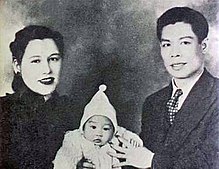
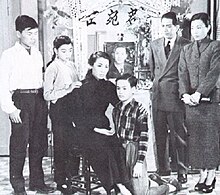

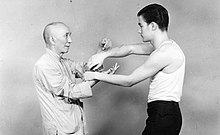

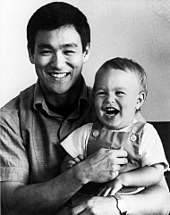
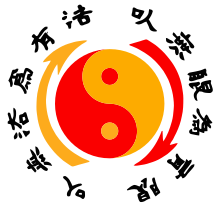

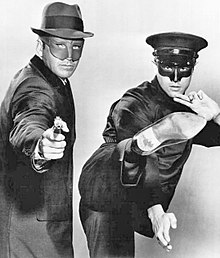
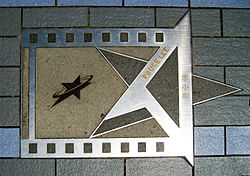


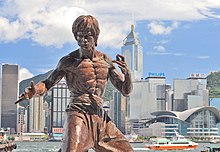
No comments:
Post a Comment